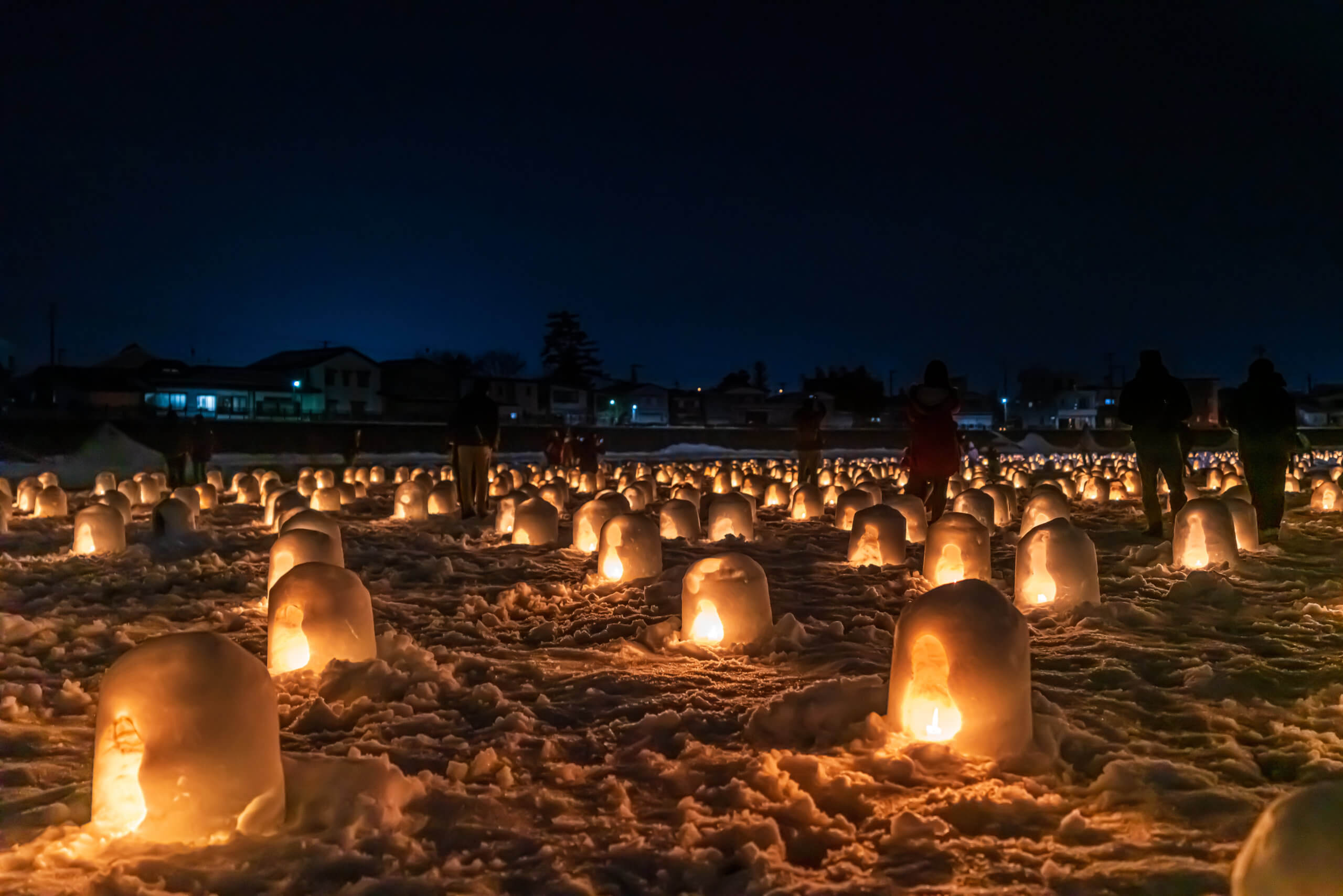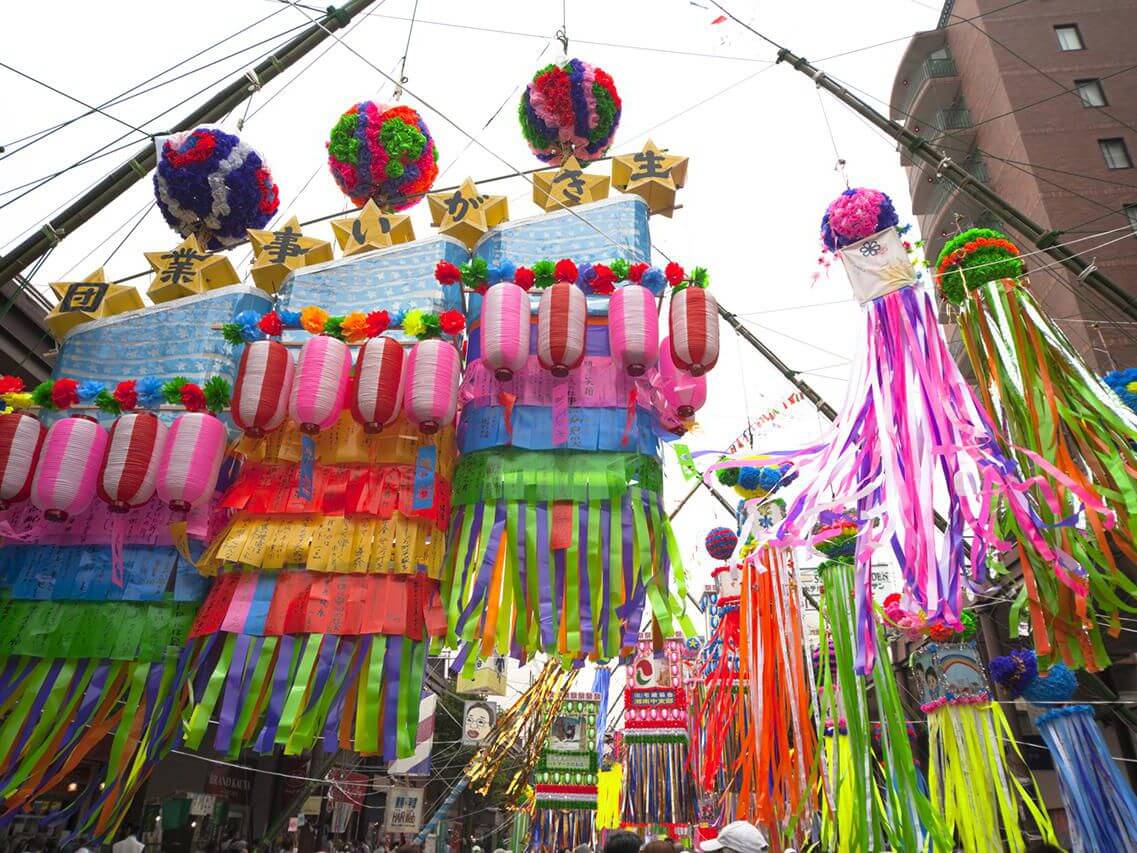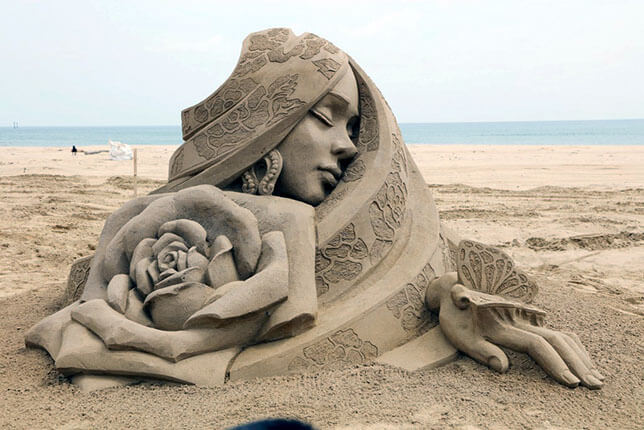Every February for more than four centuries, the city of Yokote, in the snowy prefecture of Akita, lights up. For two days of flickering glory, the Kamakura Snow Festival brings more than 100 snow huts, both adult-sized and in miniature, to residential streets, school yards, and public spaces including the city hall.

Japanese Winter Akita Yokote Kamakura
Carved from a mound of snow and hollowed out, a Kamakura is shaped roughly like an igloo, but more like a round adobe fireplace that features smooth and contoured walls with a plaster-like surface. Architectural elements include an arched doorway, a small altar, and plenty of room for the candles that collectively produce an inviting glow one might think could be seen from space. At the altar, an occupant can petition the water deity for an abundant and healthy supply of the staple – or other deities for other essentials.
Both magical and magnetic by nature, Kamakura is a vector for a festive spirit. Visitors strolling the streets for a glimpse inside the various domes are invited inside by children to sample rice cakes grilled on a charcoal brazier and a low-alcohol beverage derived from rice.
Coinciding roughly with the lunar new year in the middle of the month, the festival serves as a preface to the Bonden Festival, an exciting ritual in which men vie for an opportunity to make an offering to the gods at the local Asahiokayama Shrine. The colorful gifts – sacred wands that guide the gods to earth – can be as high as 16 feet and are magnificently crafted (often from bamboo). They are carried by the men in a procession from the city hall to the shrine. Once they arrive at the shrine, the men forge toward it, jockeying for position and often shoving each other out of the way.

Bonden Festival
Kamakura, Bonden, or both, no matter how low the mercury dips in mid-February, these time-honored traditions of Yokote promise to warm you up.
On the remote 10-mile stretch that is the Tottori Sand Dunes on Japan’s windswept west coast, the mesmerizing terrain of Namibia – or of Pilat, on France’s Bay of Arcachon – could come to mind. Inside a national park that now protects the shifting forms of tiny grains is the Sand Museum, the world’s only indoor temple to what a persevering artist with an imagination can do with what’s left after rocks and minerals have been eroded by time.
Though this exhibit is mounted upon a landscape that has been in the making for one hundred thousand years, it has been accessible to humans only since 2006, a popular gathering place in Japan’s least populated regions.
Each year the museum settles on a theme, grants artists roughly three months to design and build, and then between April and January welcomes visitors who marvel at intricate miniatures of the city of Cusco in Peru, for example, the Terracotta Warriors, or a tussle between beasts of the wild.
When you’re not ogling the sheer ingenuity of the sculptors who are able to tame an inherently dynamic material as though it were marble or clay, you can ride a camel or take a lesson in sand surfing or paragliding.

Sand Sculpture by Toshihiko Hosaka
A Pioneer
If the Sand Museum is the destination for alternative-sculpture pilgrims, one of the art form’s luminaries is surely Toshihiko Hosaka, a fine artist who began working in the medium 20 years ago while studying at Tokyo’s National University of Fine Arts and Music.
Winning awards around the world, Hosaka derives inspiration from a spectrum of influences including astrology and fairy tales, mythology and ancient history, and even religion. Although he sometimes applies an environmentally-friendly spray to protect his finished work from natural elements, he works without adhesives or molds but rather with water and sand to erect menacing dinosaurs, languorous mermaids, Alice in Wonderland, the Hindu god Ganesh, and even Poseidon on his throne.
Hosaka’s defining feature may be his ability to render texture and detail as vividly as many a Renaissance master. Faces feature creases, beards are wind-blown and wild, and garments cascade in folds as convincing as those in a Michelangelo statue chiseled from Carrara.
To plan your trip to Japan, contact your Tully Luxury Travel Designer today!







